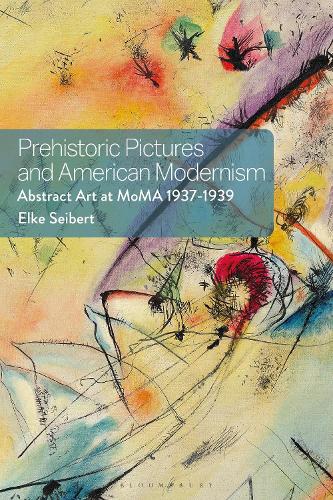
Prehistoric Pictures and American Modernism: Abstract Art at MoMA 1937-1939
(Paperback)
Available Formats
Publishing Details
Prehistoric Pictures and American Modernism: Abstract Art at MoMA 1937-1939
By (Author) Dr Elke Seibert
Bloomsbury Publishing PLC
Bloomsbury Visual Arts
29th May 2025
United Kingdom
Classifications
Tertiary Education
Non Fiction
759.0652
Physical Properties
Paperback
272
Width 154mm, Height 232mm, Spine 20mm
420g
Description
In April 1937, the Museum of Modern Art in New York hosted an exhibition that served as a catalyst for the appropriation of prehistoric rock art in postwar abstract painting. With the title "Prehistoric Rock Pictures in Europe and Africa", it displayed a range of copies from the influential collection of the German ethnologist Leo Frobenius. Largely disregarded in modern American art history up until now, this book highlights the importance of this exhibition to artists such as Josef Albers, Adolph Gottlieb, David Smith, and The American Abstract Artists group, who sought inspiration from the prehistoric images primordial creativity. With a transnational scope, this book reveals new facts about the connections between Paris and New York, and the importance of communication and collaboration between them for these artists. In doing so, Seibert shows that this debate was about more than just legitimizing abstract art forms from the past, but about recognizing an autonomous American abstract art. Presenting unseen archival material, letters, and exhibition documentation, Prehistoric Pictures and American Modernism offers a new reading of the development of modern American abstraction, and will hold an important place in the historiography of the movement, its global traditions, and its legacy.
Reviews
Opens a fascinating discourse on the undervalued artistic reception of prehistoric works in American 20th century art. This thoroughly researched book demonstrates not only the inspiration they had on modernist artists, but also how use of the controversial term primitivism was directly related to ethnographic and anthropological thought at the time. * Thomas W. Gaehtgens, Director Emeritus, Getty Research Institute, USA *
Meticulously researched and strikingly ambitious in its aims and range, Elke Seiberts study is a highly original contribution to our understanding of American modernism. Drawing on largely neglected material from a rich variety of sources - from anthropological debates in 1930s New York to the activities of the American Abstract Artist group - this book explores with brilliance and in impressive detail the impact that an exhibition of prehistoric art made on artists in the 1930s, a phenomenon that until now has been largely overlooked. Apart from its importance for the history of modern art, this is an enthralling case study in the relationship between prehistoric and 20th century art that will resonate with any art historian concerned with issues of artistic influence and appropriation across history. * Malcolm Baker, Distinguished Professor Emeritus of Art History, University of California, Riverside, USA *
An illuminating journey into the nexus where prehistoric art, emerging modernism and discourses of the indigenous intertwined and generated a new understanding of what American art could be. A lucid testament to the power of art across time. * Annette Bhagwati, Director, The Museum Rietberg, Zrich, Switzerland *
Author Bio
Elke Seibert is a Post-Doctoral Research Fellow at the Cultural Department Canton Nidwalden, Switzerland, specialising in the interdisciplinary study of reception processes in contemporary and fine art from the 18th to the 20th century.
